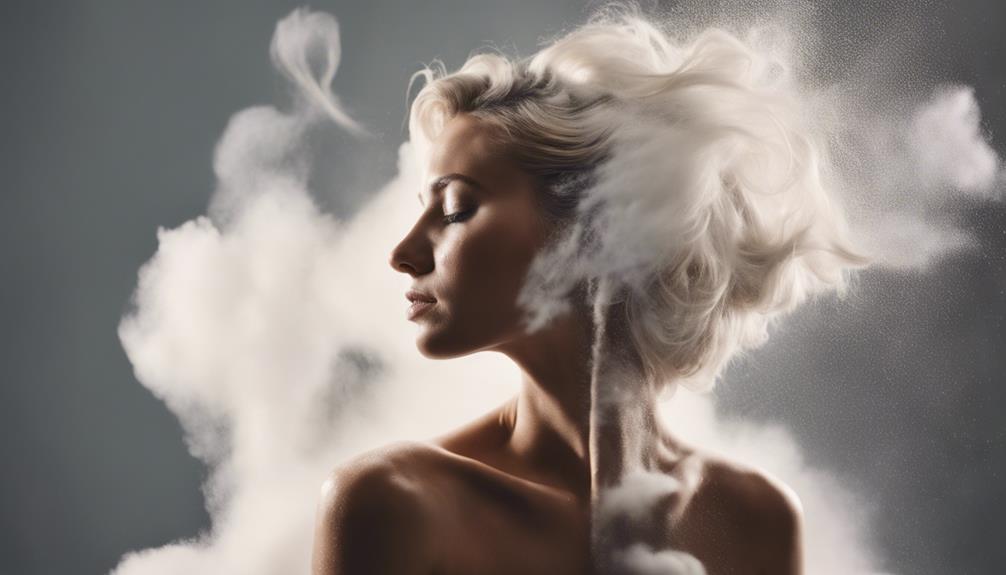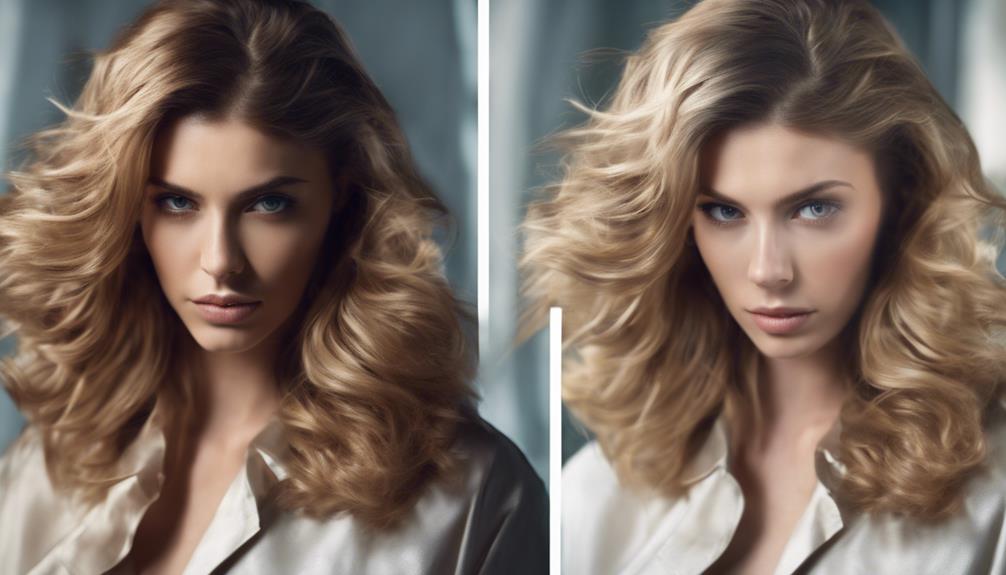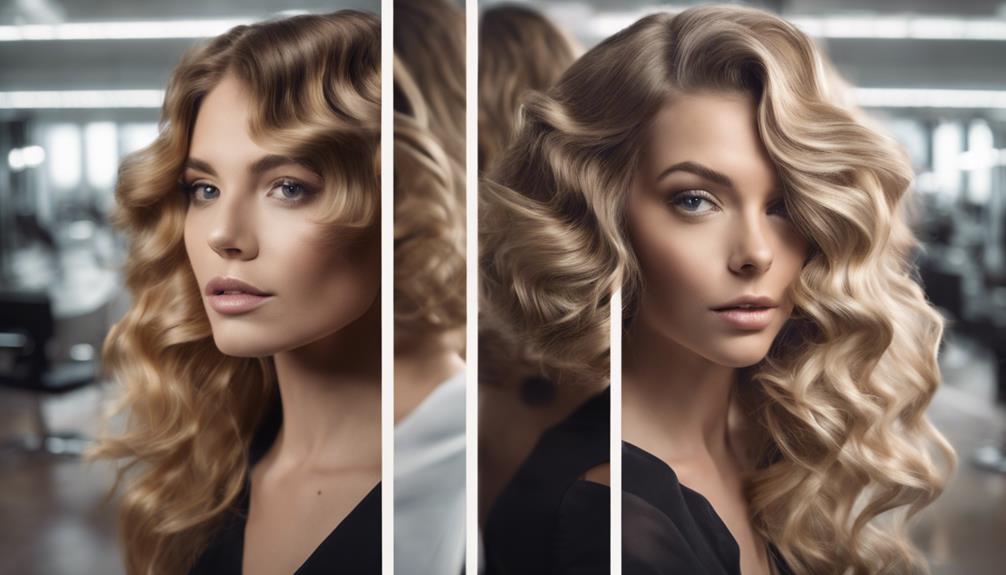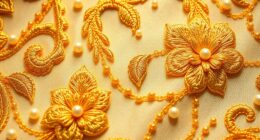Using dry shampoo before styling is a game-changer for your hair routine. It maximizes oil absorption at the roots, giving you extra volume and texture right from the start. This approach helps create a fresh base, making it easier to style and hold updos or curls. Just remember to apply it on second or third-day hair and allow it to sit for a few minutes for ideal results. Avoid using it on freshly washed hair to prevent buildup. You'll be surprised at how effective it is—stick around for tips on choosing the best product for your hair type! When selecting a dry shampoo, consider your hair type to ensure it meets your specific needs. For example, if you have fine hair, look for a product that provides volume without weighing it down. On the other hand, if you have curly or textured hair, opt for a dry shampoo that also offers styling cream benefits, such as added hydration and frizz control. By choosing the right product for your hair type, you can make the most out of this game-changing addition to your hair routine.
Key Takeaways
- Dry shampoo is most effective when applied before styling, enhancing volume and texture at the roots.
- Applying dry shampoo before styling allows for better oil absorption, creating a fresh base for hair.
- Letting the product sit for a few minutes before styling maximizes its oil-absorbing properties.
- Avoid using dry shampoo on freshly washed hair to prevent residue and ensure effective results.
Understanding Dry Shampoo
Dry shampoo is a quick and convenient solution for anyone looking to absorb excess oil and refresh their hair without washing it. These products come in various forms—like aerosol sprays, powders, and foams—making it easy for you to choose the type that fits your lifestyle.
Dry shampoos typically contain ingredients like starch or alcohol, which work to soak up grease and help extend the time between your regular washes.
When you apply dry shampoo, focus on the roots of your hair. This is where oil tends to accumulate the most. After spraying or sprinkling the product, let it sit for a few minutes to allow it to absorb the excess oil effectively.
Then, you can style your hair as usual. It's important to remember that while dry shampoos can be great for a quick refresh or to add some texture and volume, they aren't a substitute for traditional shampooing.
Using them too frequently can lead to buildup on your scalp, so it's best to use them sparingly. Understanding how dry shampoos work can help you make the most of this handy hair care solution.
Benefits of Using Dry Shampoo
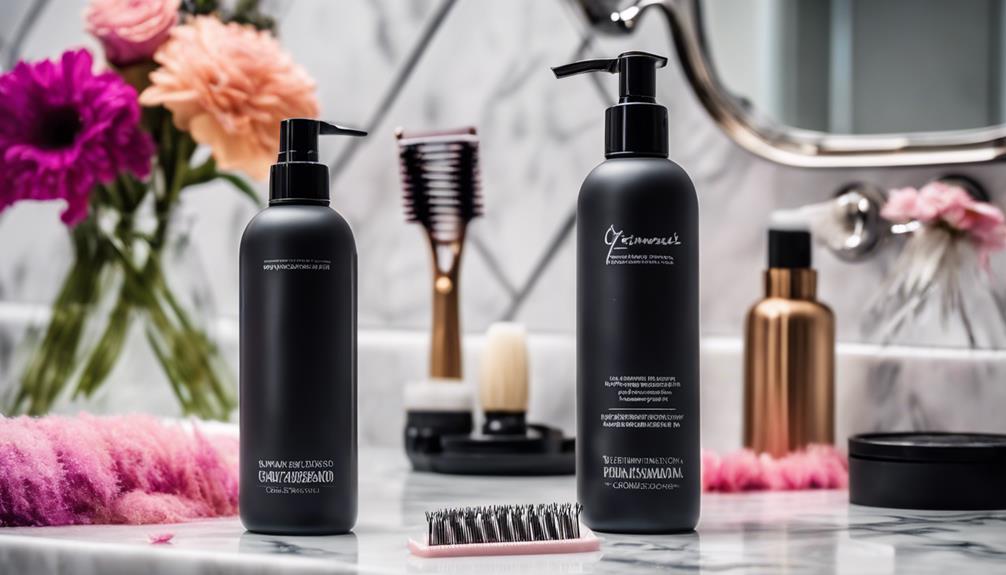
Using dry shampoo can transform your hair routine by absorbing excess oil and adding volume, making it a lifesaver for busy individuals. This magical product helps maintain a fresh appearance, reducing greasiness between washes. If you have fine or flat hair, dry shampoo is your new best friend, as it provides added volume and texture, making styling a breeze.
The convenience of dry shampoo allows for quick application, perfect for those hectic mornings or travel situations. Instead of spending time washing and drying your hair, you can spritz some dry shampoo and be on your way.
Plus, if you've colored your hair, using dry shampoo can help prolong the vibrancy of your color by protecting against fading caused by frequent washing.
Regularly incorporating dry shampoo into your routine can also extend the time between traditional washes. This not only saves you time but also contributes to healthier hair and scalp by reducing the risk of over-washing.
Application Techniques
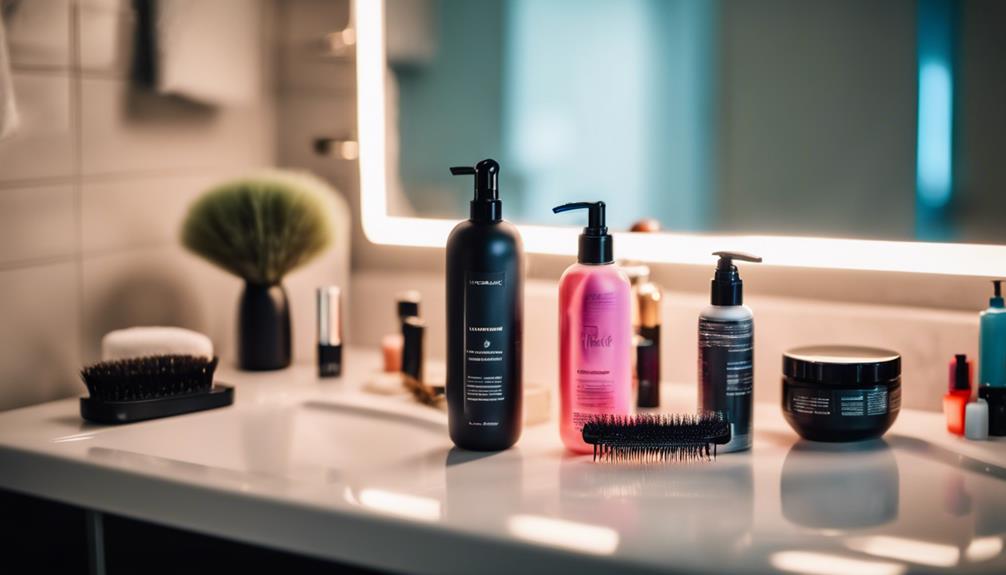
To maximize the benefits of dry shampoo, applying it correctly is key to achieving fresh, voluminous hair.
Start by confirming your hair is completely dry before application. Focus on the roots, where excess oil tends to accumulate. Hold the canister 6-8 inches away from your scalp to guarantee even distribution. This distance helps prevent clumping or residue that can make your hair look dirty.
Section your hair into smaller parts to target areas that need attention, such as the crown and roots. This technique allows the dry shampoo to work effectively on those specific spots. After you've sprayed the product, let it sit for a few minutes. This waiting period gives the dry shampoo time to absorb oil and refresh your hair.
Once the product has had time to work, use your fingers or a brush to distribute it evenly. This step not only blends the product into your dry hair but also enhances volume and texture.
Timing for Best Results
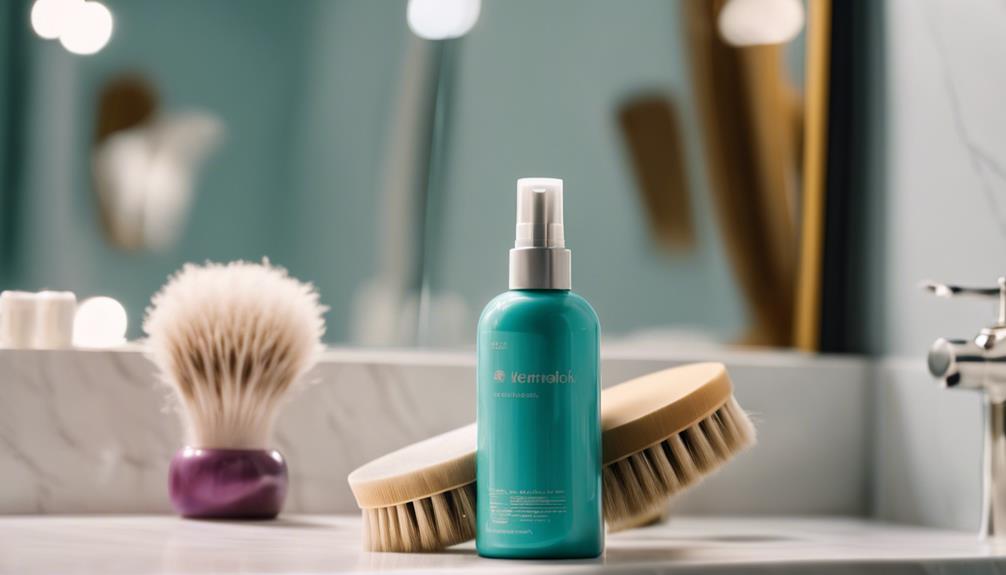
When it comes to using dry shampoo, timing can make all the difference.
You'll want to apply it at the right moment to maximize volume and avoid product buildup.
Let's explore the best application timing for ideal results.
Ideal Application Timing
Applying dry shampoo on second or third-day hair typically yields the best results, as it effectively absorbs excess oil and enhances freshness. When your hair starts to feel a bit greasy, that's the perfect time to reach for your dry shampoo. If you want maximum effectiveness, consider applying it before bedtime. This allows the product to work overnight, so you wake up with refreshed hair.
It's important not to use dry shampoo on freshly washed hair. Doing so can lead to unnecessary residue and may not provide the desired volume and texture you want. Instead, save it for days when your hair looks a bit limp and oily. Also, if you've just finished a workout, a quick spritz of dry shampoo can help absorb sweat and oil, providing a quick refresh without needing a full wash.
Keep in mind that dry shampoo isn't meant for daily use. Frequent application can lead to product buildup on your scalp, which can harm your hair health. Stick to using it strategically to maintain that clean and fresh look without compromising the health of your hair.
Pre-Styling Benefits
Using dry shampoo before styling creates a fresh base that enhances volume and texture, making it easier to achieve your desired look. When you apply dry shampoo on second or third-day hair, it absorbs excess oil at the roots, maximizing the benefits of your style. This timing is essential, as oil buildup can weigh down your hair and make it difficult to work with.
If you've got fine or flat hair, dry shampoo can be a game changer. Applying it on freshly washed hair adds texture and volume, allowing for more styling options. Plus, when you use dry shampoo before styling, you'll find that it gives your hair better grip and hold, making it simpler to create updos or teased hairstyles.
For best results, let the dry shampoo sit for a few minutes after application. This guarantees proper absorption, preventing clumping and leading to a more polished finish. By timing your dry shampoo application right, you'll set yourself up for styling success, whether you're going for a sleek look or something more voluminous.
Avoiding Product Buildup
To keep your hair looking fresh without the risk of product buildup, timing your dry shampoo application is key. If you have oily hair, using dry shampoo effectively can make all the difference.
Here are some tips to avoid excess buildup:
- Apply dry shampoo on second or third-day hair for best results.
- Focus on the roots where oil accumulates instead of spraying all over.
- Allow the product to sit for a few minutes to absorb oils.
- Use dry shampoo sparingly to prevent a weighed-down appearance.
Choosing the Right Product
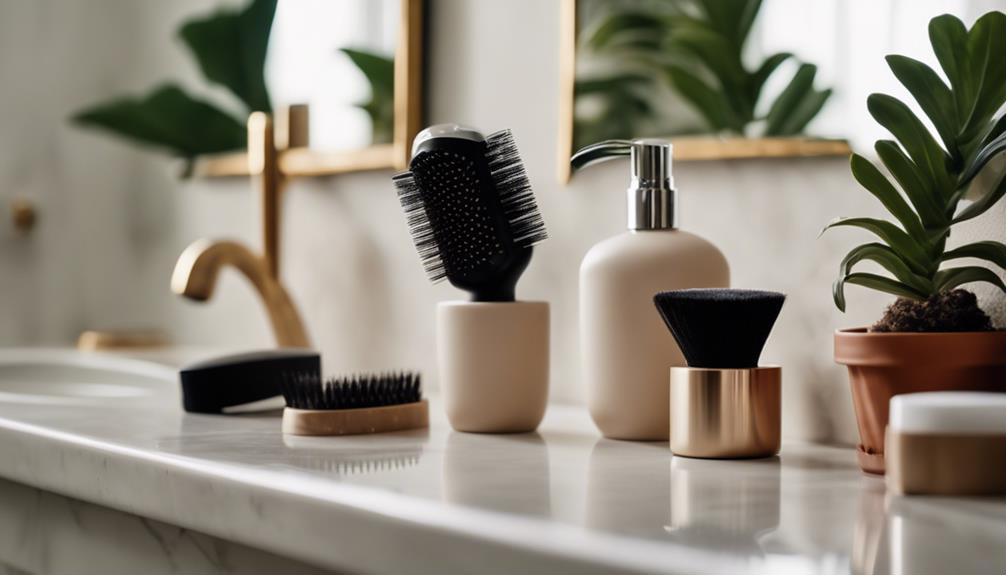
When you're choosing a dry shampoo, consider your hair type to find the right formulation for your needs.
Pay attention to the ingredients as well; nourishing components can make a big difference in maintaining your hair's health.
Hair Type Considerations
Selecting the right dry shampoo hinges on your hair type, guaranteeing you get the most effective results tailored to your specific needs. When you use dry shampoo every day, knowing what works best for your hair can make a significant difference.
Here are some key considerations:
- Oily Hair: Opt for oil-absorbing formulas that focus on scalp health.
- Fine Hair: Look for volumizing options to add body and texture.
- Dark Hair: Choose tinted dry shampoos to prevent visible white residue.
- Curly Hair: Select moisturizing formulations to avoid dryness.
Each hair type has unique characteristics, and using the right product can enhance your results. By understanding your hair's specific needs, you can choose a dry shampoo that complements your routine, making it easier to maintain your style every day.
Always read product labels and reviews to guarantee you're selecting a dry shampoo that aligns with your hair goals, leading to ideal outcomes based on your individual characteristics.
Ingredient Selection Importance
Choosing the right ingredients in dry shampoo greatly impacts its performance and your overall hair health. When considering ingredient selection importance, you should focus on products tailored to your specific hair type.
For instance, if you have oily hair, look for formulas with rice starch, known for its exceptional oil absorption. Conversely, if your hair is fine or thick, select products that provide nourishment without weighing it down.
Avoid harsh chemicals, as they can strip your hair of its natural oils, leading to damage over time. Opt for cruelty-free and eco-friendly brands to align your hair care routine with your values while supporting ethical practices.
Tinted formulas are particularly beneficial for darker hair, preventing that dreaded white residue that can occur with traditional dry shampoos.
Before making a purchase, read product reviews to gauge effectiveness, scent, and potential residue. This insight can guide you toward a dry shampoo that meets your needs.
Common Mistakes to Avoid
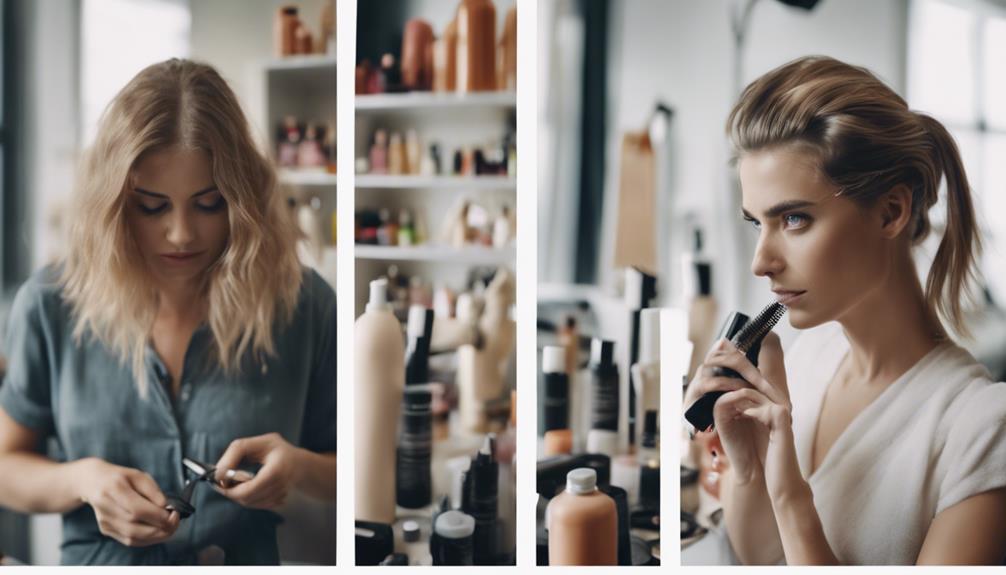
Avoiding common mistakes with dry shampoo can greatly enhance its effectiveness and keep your scalp healthy. Many people unknowingly sabotage their styling efforts with these oversights. Here are some common mistakes to avoid:
Overusing dry shampoo: It can lead to buildup on your scalp, causing irritation and making you wash your hair more often.
Not allowing it to absorb: Give your dry shampoo a few minutes to soak in before styling; otherwise, you risk clumping and ineffective oil absorption.
Skipping the brushing step: Failing to brush after applying can leave the product unevenly distributed, diminishing its volumizing effects.
Applying too close to the scalp: This can create visible white residue or a chalky look, especially if you have darker hair.
Relying solely on dry shampoo: Regular cleansing is essential; neglecting this can compromise your scalp health, leading to issues like dandruff or excessive oiliness.
User Experiences and Concerns
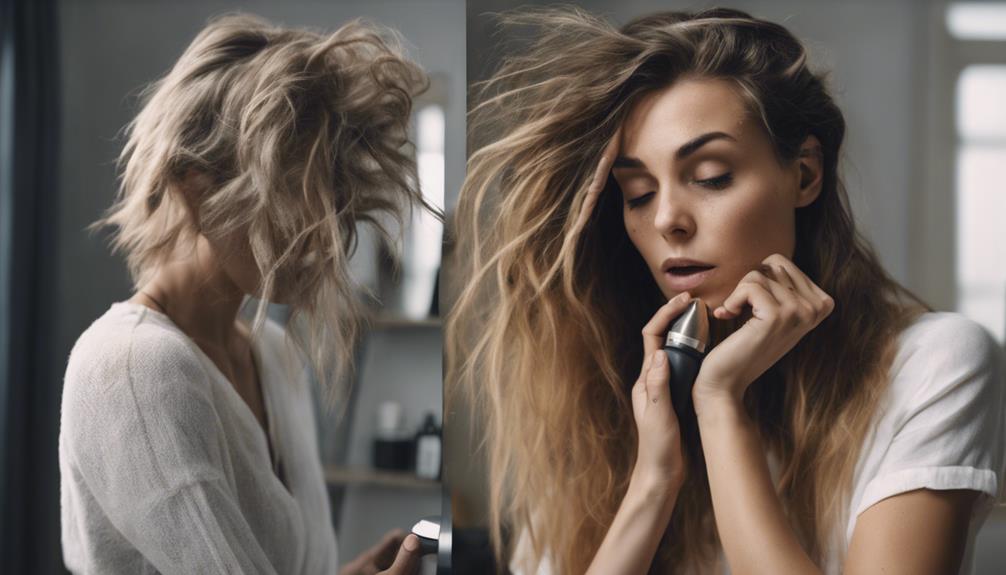
User experiences with dry shampoo reveal a mix of excitement and concern, as many appreciate the added volume and texture it provides while grappling with issues like product buildup and visible residue. Users often consult their hair stylist for advice on balancing dry shampoo usage with regular washing to avoid buildup.
Here's a quick overview of user experiences:
| User Type | Benefits | Concerns |
|---|---|---|
| Fine Hair | Enhanced volume and texture | Product buildup |
| Oily Hair | Oil absorption | Heavy feel |
| Dark Hair | Adds grip for styling | Visible residue |
| Recently Washed Hair | Easier styling | Not suitable for everyone |
Many find that applying dry shampoo on freshly washed hair can help with styling; however, it might not work for all hair types. The desire for tinted options grows among those with darker hair to prevent visible residue. Experimenting with different brands is essential for users, especially those with very oily hair, to find the right product that suits their needs without compromising the look.
Frequently Asked Questions
Do You Apply Dry Shampoo Before or After Styling?
You should apply dry shampoo before styling. It absorbs excess oil, adds volume, and creates a solid foundation for your hairstyle. Just section your hair, spray from a distance, and let it sit for better results.
Does Dry Shampoo Make Hair Easier to Style?
Like a knight preparing for battle, you'll find that dry shampoo makes your hair easier to style. It adds grip, absorbs oil, and boosts volume, turning your locks into a canvas for creativity and flair.
Should I Use Dry Shampoo Before Curling My Hair?
Yes, you should use dry shampoo before curling your hair. It adds texture and grip, helping your curls hold better. Just remember to apply it on dry hair and let it sit for best results.
Can I Use Dry Shampoo Before Straightening My Hair?
Imagine your hair transformed into a sleek masterpiece. Yes, you can use dry shampoo before straightening! It absorbs oil, boosts volume, and enhances grip. Just apply it sparingly to your roots for the best results.
Conclusion
In the grand tapestry of your hair care routine, dry shampoo can be the golden thread that ties everything together.
Whether you spritz it before or after styling, finding the right rhythm is key to revealing your hair's potential.
Embrace the versatility, avoid common pitfalls, and let your locks dance with freshness and volume.
Remember, the right timing can be the secret ingredient to a show-stopping mane, so experiment and discover what makes your hair sing!
